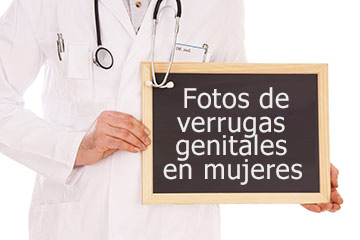PERSONAL PROTECTIVE EQUIPMENT GUIDELINES
FOR FIRST RESPONDERS. SWINE FLU
April 26, 2009
These Guidelines will be continually updated as situation evolves.
Introduction
It is the intention of this DSHS guidance to provide information and recommendations for the transport of patients with potentially infectious respiratory illnesses. This policy will also provide updated guidelines for "respiratory etiquette" and the use of Personal Protection Equipment (PPE) as well as recommendations for preventive health care measures for EMS providers.
A novel Swine Flu virus has been identified in persons with respiratory infections in Texas. Since this is a novel virus most Texas residents will not have immunity to this virus.
Human-to-human transmission of swine flu can also occur. This is thought to occur in the same way as seasonal flu occurs in people, which is mainly person-to-person transmission through coughing or sneezing by people infected with the influenza virus.
EMS providers should be aware of the signs and symptoms of infectious respiratory diseases and the procedures necessary for protecting themselves. Not all respiratory infections are transmitted in the same way. Transmission can occur from direct or indirect contact, large droplets, or small droplet nuclei. The mode of transmission will depend on the etiological agent. Certain procedures can also impact transmission of infectious agents by producing aerosols. These are deemed "high risk respiratory procedures" and include intubation, extubation, deep tracheal suctioning, nebulized respiratory treatments and bronchoscopy. More often in the field of emergency medicine, the etiologic agents of infections are unknown. Given this, it is paramount that good infection control practices be followed for contact with all patients.
Respiratory Etiquette Strategy
- Implement the use of surgical masks by healthcare personnel, during the evaluation of patients with respiratory symptoms.
- Provide surgical masks to all patients with symptoms of a respiratory illness. Provide instructions on the proper use and disposal of masks.
- For patients who cannot wear a surgical mask in addition to any medical treatment being provided, provide tissues and instructions on when to use them (i.e., when coughing, sneezing, or controlling nasal secretions), how and where to dispose of them, and the importance of hand hygiene after handling this material.
- Continue to use droplet precautions to manage patients with respiratory symptoms until it is determined that the cause of symptoms is not an infectious agent that requires precautions beyond standard precautions.
Recommendations
1. Personal Protection
- When assessing a patient with symptoms of a febrile respiratory illness, a surgical mask is usually adequate protection. When directed by a medical advisor, use the highest level of respiratory protection available. A fit-tested N-95 respirator or higher is preferred.
- Adhere to Standard Precautions - the use of gown, gloves and eye protection if contact with bodily secretions or a contaminated environment is anticipated. Additionally, EMS providers must be familiar with PPE application (donning) and removal (doffing) procedures.
- Place a surgical mask on the patient if not medically contraindicated.
- Prior to transporting a patient with an infectious respiratory symptom, the door between the driver and the patient compartment should be closed. If the vehicle does not have a barrier between the cab and the patient compartment, the driver and front seat passenger should, if so directed, wear a surgical mask or higher.
- Practice good hand hygiene. Hands must be properly washed before and after removal of gloves with warm soapy water or disinfected with a waterless hand sanitizer if a sink is not immediately available. Waterless hand sanitizer should be available in the ambulance for use during transport. Do not wait until you return to the ambulance station to practice hand hygiene.
- Assure adequate cleaning of the equipment and vehicles between transports. This cleaning should minimally include:
-
- Use of Environmental Protection Agency (EPA) approved disinfectant;
- Disinfecting any reusable equipment used on the patient as per the manufacturer's instructions;
- Frequently touched surfaces of the vehicle;
- Visibly soiled surfaces.
-
2. Medical procedures, such as nebulized respiratory treatments, that may re-aerosolize infectious material should only be done if medically necessary. It is recommended that mechanical ventilators, including BVM devices and suction equipment, should be fitted with a HEPA filter, if available, to prevent re-aerosolization. EMS agencies should contact equipment manufacturers for recommendations on a HEPA filter. The highest level of respiratory protection should be worn during these procedures.
EMS Provider Health Precautions
- DSHS strongly recommends the following to EMS agencies and providers:
-
- Fit testing for an N-95 or higher respirator masks and insuring that each provider knows the manufacturer and model of the N-95 mask for which they were fit tested.
- Education on performing a "fit check" (conforming the mask to the face and checking for air leaks) after donning N95 respirators.
- Frequent and on-going education including, but not limited to infection control measures, PPE as well as proper personal/hand hygiene.
- Annual flu vaccinations and other preventive health measures.
- EMS agencies should monitor their crews for any type of infectious illness. EMS management should monitor any provider that presents with signs and symptoms of a febrile respiratory illness. Agencies should consider the following (in order of preference):
-
- Release staff from duty until they have sought medical attention and have sufficiently recovered.
- Require EMS providers to don surgical masks to protect their patients while providing care.
- The EMS agency medical director and the local health department should be advised of any EMS healthcare provider who is hospitalized with pneumonia.
Chemoprophylaxis
Antiviral chemoprophylaxis (pre-exposure or post-exposure) is recommended for close contacts of a confirmed or highly suspected case of swine influenza virus infection.
Chemoprophylaxis is recommended for health care workers caring for patients ill with confirmed or highly suspected swine influenza.
Conclusion
It is vitally important that the EMS community get in the habit of using Standard Precautions, such as donning Personal Protective Equipment and placing a surgical mask on the patient when appropriate, while treating all patients with a suspected infectious disease. Changing routine habits to include these measures will allow EMS providers to protect themselves and their patients against known infectious diseases as well as SARS or other new emerging diseases.
In addition to changing habits, providing initial and on going education on disease prevention, proper donning and removing of PPE, hand hygiene and hand washing techniques as well as equipment and vehicle cleaning will allow the EMS community to protect patients and itself against all types of infectious diseases.
For Additional Resources:
More information is available at the following web sites;
References
- CDC Interim Guidance: Ground Emergency Medical Transport for Severe Acute Respiratory Syndrome Patients
- CDC Updated Interim Guidance - Pre-Hospital Emergency Medical Care and Ground Transport of suspected Severe Acute Respiratory Syndrome Patients.
Fuente
Texas, Department of Health Services
http://www.dshs.state.tx.us






